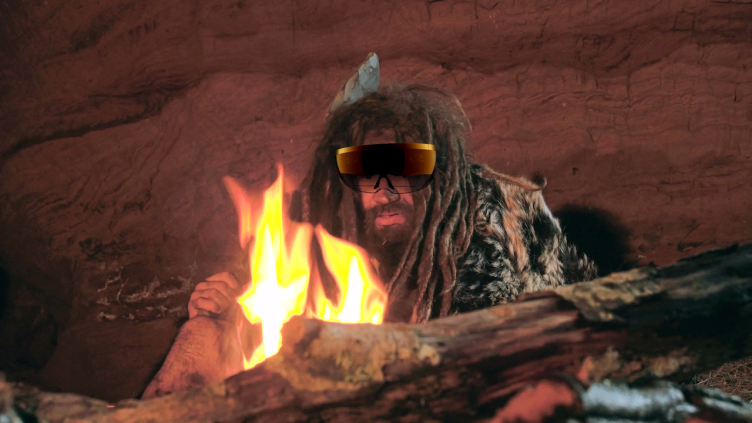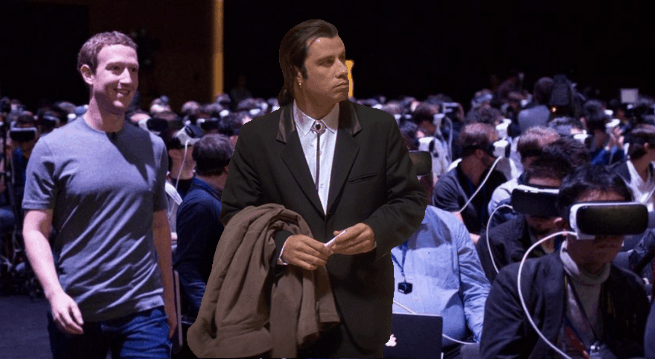If the Metaverse doesn’t exist – what do we have today?


If the Metaverse doesn’t exist, what do we have today?
Currently, the term “Metaverse” is on everyone’s lips, but who really knows what the Metaverse is?

Those of us who work in the field know that it doesn’t currently exist, and in my opinion, it might be something we never fully achieve due to certain limitations imposed by marketing departments, intellectual property, copyright laws, and a range of possible scenarios where the much-coveted interoperability will be unfeasible.
It’s a catch-all term that enjoys enough ambiguity to be applied to anything related to spatial computing and social virtual spaces. However, it creates great discomfort among professionals in the immersive technologies industry (XR industry), as it is considered in some circles to be a term misused in marketing efforts, in an attempt to simplify the explanation of something they want to sell today but that you will only be able to experience “in the future” (if certain conditions are met over time, of course).
Although the reasons behind the widespread use of the term are largely understandable, it can be boiled down to a lack of truthful and concrete information about the various components of the “Metaverse" (persistence, interoperability, decentralized economy, among others). These are information gaps that affect the entire sector across the board.
Whether due to the creation of expectations based on sales strategies or a lack of vision behind the client proposal, today we likely find thousands of “dead metaverses" scattered across the infinite corners of immersive platforms that we probably never heard of because they didn’t manage to secure a top spot in that sector.
For the reasons stated above, I propose coining a term that adequately identifies:
- The state of the content currently offered in multi-user immersive spaces
- The state of the immersive industry, its capabilities, and its reach
- The flexible future of the Metaverse concept
- The intrinsic maturation process of these experiences over time
- The goal is the Metaverse
Words and Reality
According to the Sapir-Whorf Hypothesis*, “There is a relationship between the language a person uses and the way they perceive the world.” Therefore, it is essential to be precise in how we build ideas based on words.
The “Metaverse" doesn’t exist yet
Despite the media and certain companies persistently naming and invoking it, it has become a marketing tool that, contrary to its intent, portrays our budding industry as exaggerated, alarmist, and reckless. The spatial computing industry is constantly evolving, and the Metaverse will eventually emerge. However, for now, we only have a great variety of protoverses.
So, the Protoverse is…
Any development of immersive, social, interactive, multiplayer spaces with the potential to mature over time, progressively integrating various technologies, strategies, protocols, and governance of these spaces, achieving the harmonious convergence of all factors, leading to the birth of a Metaverse.
We should talk about these immersive spaces in the same way we talk about the companies that develop them, like Start-ups (infancy) or Unicorns (maturity). Just as a baby is not an adult, today’s protoverses are not Metaverses.
The Sandcastle
The point is that innovation needs these spaces to test, research, and build sandcastles. The Metaverse must have uniform, reliable, and secure characteristics; every user must perceive the same experience, which should be consistent, persistent, and not suffer changes with every update. To achieve the exact measures for this recipe, we need hundreds (perhaps thousands) of protoverses, walled gardens in which to experiment until the perfect formula is found.
At present, there are numerous virtual worlds, each with its own special features. Some have millions of users who can interact in real-time, while others are deserted, with no activity at all.
All these protoverses have been necessary to get us where we are, and many more will be left behind as we reach our destination. We can sense the potential, and we are certain that the technological convergence required for a decentralized Metaverse is in our future. This implies that we are not there yet.
A Long Crusade
In the words of Tony Parisi**, “the term ‘Metaverse’ is not appropriate when referring to a place in the Metaverse." Accepting the current state of the industry means acknowledging that we are in a stage of protoverses, a “pre-" before reaching the Meta.
We must concede that further development is needed. Recognizing the current limitations of our technological, economic, and social capabilities is key. Admitting that we are in the protoverso stage comes with an intrinsic commitment that indicates the industry must mature naturally while simultaneously planning its next moves.
The decisions we make today will have repercussions over time, becoming certainties and consequences for a large number of people worldwide. We are at a pivotal technological point where we must take paths guided by ethics and social well-being; a perspective that involves long-term decision-making, not without risks.

However, we must take them.
The goal is an open, multiplayer, and interactive world with an internal economy, a governance system, clear ethical rules, and security protocols. It must have persistence, meaning that your actions within it have consequences and endure over time. Ideally, these virtual worlds should be cross-interoperable, allowing your identity, avatar, and digital objects to accompany you from place to place.
Until a single, decentralized Metaverse emerges.
The Challenge…
This process involves a cross-sectional technological evolution and worldwide access to the necessary equipment. Ideally, the Metaverse will be device-agnostic, but such advanced technology implies a minimum power requirement to connect to its interface.
Generally, it is assumed that both Americans, Europeans, and some Asian countries will have that power from the start. However, the omnipresent Metaverse we envision will only arise if a minimal technological infrastructure is developed globally. All of humanity must have access to it.
Before we get there, we need protoverses—places where we can experiment with all that equipment and watch it evolve. The sandboxes in which we will experiment with immersive technologies, blockchains with native currencies, self-sufficient economies, various forms of governance, and compatible avatars.
Let’s avoid evaluating the child as if it were an adult.
The virtual spaces where we will create business models around the Metaverse are called protoverses. They are the missing link, and now is their time.
—
* https://es.wikipedia.org/wiki/Hip%C3%B3tesis_de_Sapir-Whorf
** https://medium.com/meta-verses/the-seven-rules-of-the-metaverse-7d4e06fa864c